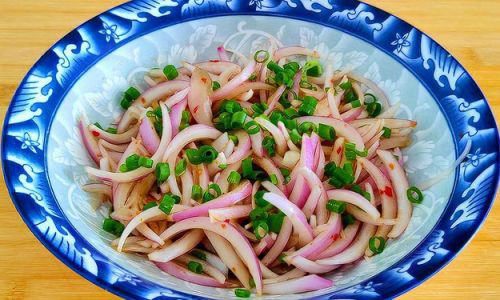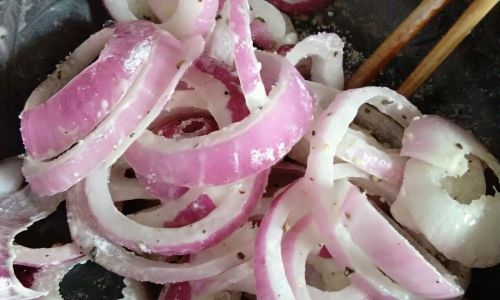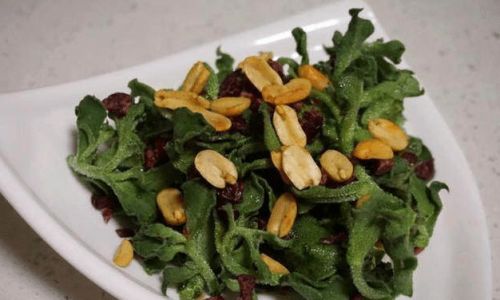Table of content
Stir-fried onions, a seemingly simple dish, hold the power to transform a mundane meal into a culinary masterpiece. Their sweet, savory, and slightly caramelized flavor profile can elevate sandwiches, salads, grilled meats, and even pasta. Yet, achieving that perfect balance—tender yet crisp, golden but not burnt—requires precision, patience, and a deep understanding of the onion’s nature. This article delves into the nuances of selecting, preparing, and cooking onions to create a dish that tantalizes the taste buds and leaves a lasting impression.
The Foundation: Choosing the Right Onion
Not all onions are created equal. The variety you choose will dictate the flavor, texture, and sweetness of your final dish. Here’s a breakdown of common onion types and their ideal uses:

- Yellow Onions: The workhorse of the kitchen, yellow onions boast a balanced flavor profile—sharp when raw, mellow and sweet when cooked. Their high sugar content makes them perfect for caramelization.
- Red Onions: With a vibrant hue and a mild, slightly spicy kick, red onions are best suited for raw applications like salads or salsas. However, when stir-fried, they retain their color and add a subtle crunch.
- White Onions: Crisper and more pungent than their yellow counterparts, white onions are ideal for dishes requiring a bold, assertive flavor, such as Mexican or Asian stir-fries.
- Shallots: Delicate and sweet, shallots caramelize quickly and add a gourmet touch to sauces, dressings, or delicate stir-fries.
- Sweet Onions (e.g., Vidalia, Walla Walla): These onions have a naturally high sugar content and low acidity, making them perfect for dishes where sweetness is paramount, such as onion rings or caramelized onion dips.
For stir-frying, yellow onions are often the safest bet due to their versatility, but don’t hesitate to experiment with blends of red and white onions for visual and textural contrast.
Preparation: The Key to Even Cooking
The secret to flawless stir-fried onions lies in meticulous preparation. Follow these steps to ensure uniform cooking and maximum flavor extraction:
Peeling and Trimming
- Trim the Root End: Cut off the root end to stabilize the onion while slicing.
- Remove the Skin: Peel away the papery outer layers, ensuring no dirt or residue remains.
- Halve or Quarter: Depending on the recipe, halve or quarter the onion. For stir-fries, halving is often sufficient.
Slicing Techniques
The way you slice onions affects their cooking time and texture:
- Uniformity Matters: Aim for slices of equal thickness (¼–½ inch) to ensure even cooking.
- Direction: Slice with the grain for firmer texture (ideal for grilling) or against the grain for tender, melt-in-your-mouth results (perfect for stir-fries).
- Julienne Cut: For a restaurant-quality presentation, slice onions into thin, matchstick-like strips. This maximizes surface area for caramelization.
Soaking (Optional)
If raw onions’ pungency bothers you, soak sliced onions in ice water for 10–15 minutes. This mellows their sharpness while preserving crispness. Pat dry thoroughly before cooking to prevent sizzling oil spatter.
The Cooking Process: From Raw to Caramelized
Stir-frying onions is a dance of heat, timing, and technique. Here’s how to master each stage:
Heat Control
- Low and Slow for Caramelization: To achieve deep golden hues and rich sweetness, cook onions over low to medium-low heat. This allows natural sugars to develop without burning.
- High Heat for Crispness: For a quick, charred texture (common in Asian-style stir-fries), use high heat but stir constantly to prevent scorching.
Oil Selection
- Neutral Oils: Canola, vegetable, or peanut oil work well for high-heat cooking.
- Flavorful Fats: For added richness, use butter, ghee, or olive oil. Be cautious with butter, as it has a lower smoke point.
The Stir-Frying Technique
- Sautéing vs. Stir-Frying: Sautéing involves cooking in a small amount of fat, while stir-frying uses high heat and constant motion. For onions, a hybrid approach works best: start in a hot pan with oil, then reduce heat to medium to encourage caramelization.
- Stirring Frequency: Stir every 2–3 minutes initially, then more frequently as the onions begin to brown. This prevents sticking and ensures even coloring.
Achieving Perfect Caramelization
Caramelization is a chemical reaction between sugars and amino acids, resulting in browned, flavorful compounds. To nail it:

- Patience is Key: Allow 15–20 minutes for onions to caramelize properly. Rushing the process with high heat leads to bitterness.
- Deglaze with Liquid: If the pan becomes dry, add a splash of water, broth, or wine. This loosens stuck-on bits (called fond) and adds complexity.
- Add Sugar (Optional): A pinch of sugar can accelerate caramelization, but it’s unnecessary if using sweet onions.
Flavor Enhancements: Beyond Basic Stir-Fries
While stir-fried onions are delicious on their own, experimenting with seasonings and add-ins can elevate their profile:
Aromatics and Herbs
- Garlic: Add minced garlic during the last 2–3 minutes of cooking for a pungent kick.
- Fresh Herbs: Toss in thyme, rosemary, or sage during the final stir for an aromatic finish.
- Spices: A sprinkle of smoked paprika, cumin, or chili flakes adds warmth and depth.
Acidity and Sweetness
- Vinegar: A splash of balsamic or red wine vinegar balances sweetness with tang.
- Citrus: Zest or juice from lemons or limes brightens the dish.
- Honey or Maple Syrup: For dessert-like onions, drizzle with honey during the last few minutes.
Umami Boosters
- Soy Sauce: A teaspoon of soy sauce adds saltiness and umami.
- Fish Sauce: A dash imparts a savory, fermented complexity (common in Southeast Asian dishes).
- Miso Paste: Whisk into the onions for a rich, earthy flavor.
Pairing Suggestions: From Burgers to Bowls
Stir-fried onions are incredibly versatile. Here’s how to incorporate them into your meals:
- Toppings: Pile onto burgers, hot dogs, or grilled sausages.
- Side Dishes: Serve alongside roasted meats or as part of a vegetable medley.
- Soups and Stews: Use as a flavor base for French onion soup, chili, or curries.
- Pizza and Flatbreads: Scatter over dough before baking for a caramelized crunch.
- Grain Bowls: Mix with quinoa, rice, or farro for added texture and flavor.
Common Mistakes and How to Avoid Them
Even seasoned cooks stumble occasionally. Here’s how to troubleshoot:
Overcrowding the Pan
- Issue: Onions steam instead of caramelize.
- Fix: Cook in batches if necessary. Use a pan large enough to accommodate onions in a single layer.
Using High Heat Too Early
- Issue: Onions burn before caramelizing.
- Fix: Start with medium heat, then lower as needed.
Adding Salt Too Early
- Issue: Salt draws moisture, slowing caramelization.
- Fix: Season towards the end of cooking.
Undercooking
- Issue: Onions remain raw-tasting and crunchy.
- Fix: Test doneness by tasting a piece—it should be soft, golden, and sweet.
Health Benefits: More Than Just Flavor
Beyond their culinary appeal, onions offer impressive health perks:
- Antioxidants: Rich in quercetin, which reduces inflammation.
- Fiber: Supports digestion and satiety.
- Vitamins: Good source of vitamin C, B6, and folate.
Conclusion: The Joy of Perfectly Cooked Onions
Stir-fried onions are a testament to the magic of simplicity. With the right technique, patience, and a dash of creativity, you can turn a humble vegetable into a dish that steals the spotlight. Whether you’re a novice cook or a seasoned chef, mastering this foundational skill will open doors to endless culinary possibilities. So grab your knife, heat the pan, and let the onions work their sweet, savory magic. Your taste buds—and your dinner guests—will thank you.






0 comments